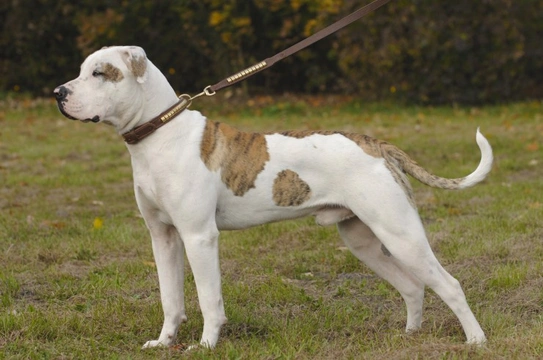
Why is the American bulldog becoming so popular?
The American bulldog is the UK’s 25th most popular dog type overall – out of a total of 241. This is quite an achievement when you consider the level of competition for the position, particularly when you take into account the fact that the American bulldog isn’t actually recognised as a pedigree dog breed in the UK.
Bull breeds of all types are as a whole very popular in the UK, including our own native English bulldog and continental neighbour the French bulldog. Both of these dog breeds fall within the top 10 list (with the French bulldog our most popular breed overall) it is only natural that interest in other bull breeds has increased exponentially as a result of this too.
In fact, the huge popularity of these two pedigree bulldog breeds – as well as the controversy surrounding them – has gone some way towards making the American bulldog more popular as a result, particularly among people who love bull breeds as a whole but who are concerned about the modern development of these pedigree breeds.
In this article we will examine why the American bulldog is becoming so popular in the UK, and cover some of the main reasons for their appeal. Read on to learn more.
What is an American bulldog?
The American bulldog is referred to as a dog type rather than a breed, because they’re not recognised by The Kennel Club as pedigrees and so, can’t be registered with The Kennel Club nor shown in breed shows. However, they are recognised in their home country by The American Kennel Club, and are really popular in the USA, even more so than they are here.
Their earliest origins are the Old English bulldog, which was first imported to the USA by immigrants who migrated to the New World. The breed has evolved a lot since that time, although the effects of the Second World War nearly saw the American bulldog die out entirely, and only concerted efforts to raise their numbers saw their continued survival.
This involved outcrossing the breed to English bulldogs, although the English bulldogs of the day were very different in appearance to what we think of as being today’s norm. After ensuring the continued survival of the breed, their popularity grew and grew, and now they are widely exported all over the world, including to the UK.
Because large numbers of dogs of this type have only really been bred in the UK over the last few decades, they have yet to reach the stage where they will achieve Kennel Club recognition.
However, given their strong following of fans and increasing numbers, this may well change in the future.
What are the breed’s best features?
American bulldogs have a lot going for them – they’re hugely loyal and loving with their families, and usually very good with children too. They often have a particular soft spot for kids, and will spend a lot of time with them as well as often being quite protective of them.
They make for good guard dogs and tend to keep a watchful eye on their territories, and their appearance is imposing enough that a barking American bulldog serves as quite the deterrent to would-be intruders. However, they are not at all aggressive dogs when properly trained and managed, and they are also reputed to be reasonably easy to train.
They have short, single-layered coats that require little to no attention other than the odd bath, and they are also very playful and lively, more so than most other bulldog breeds. They can be quite boisterous and love to play with other dogs, so they suit active owners who like to walk and explore.
An alternative to overtyped pedigree breeds
One of the factors that has almost certainly contributed to the increasing popularity of the American bulldog is that they combine all of the best traits of bulldog breeds in terms of their appearance and temperament, but without being plagued by the long list of health issues that commonly afflict the English bulldog.
Today’s English bulldogs are much heavier, muscular, and fatter than their historical ancestors, with shorter legs, a wider head and neck, and a much flatter face. This has resulted in the English bulldog being prone to a huge range of different health issues that can affect the dog’s longevity and quality of life, and selective breeding for ever-more exaggerated features is only serving to increase these problems.
Dogs that are taller, leaner, and without such a flat face are apt to be more active and healthy, and have lower risk factors for health conditions that result from ultra-typing to produce an exaggerated appearance.
Whilst the health and conformation of English bulldogs can be very variable across different breeding programs, the American bulldog provides an alternative for those that love bulldogs but don’t like the idea of potentially breeding in exaggerations that harm the dog.
They also tend to be rather more lively and active too, which offers the alternative of a bulldog type that is better suited to families that like to walk a lot and spend a lot of time outside without worrying that the dog is getting worn out or starting to overheat.



